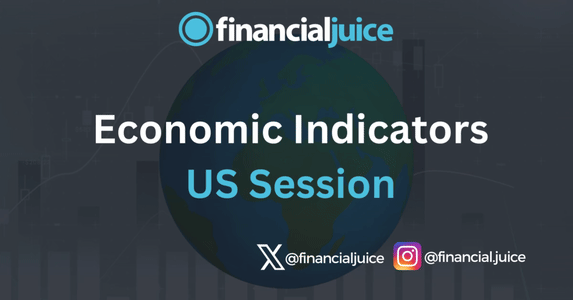
Week Ahead: Economic Indicators (US)
Hey, Traders!
For the May 27th week, here is a list of all of the major economic indicators being released during the US Session, with a brief synopsis of what they represent and what to possibly expect from the markets in reaction.
Tuesday 28th May
10:00 ET
US CB Consumer Confidence for May
US Consumer Confidence measures the optimism or pessimism among consumers about the overall economic conditions and their personal financial situations. Compiled and released by the Conference Board through consumer surveys, the index comprises two key components: the Present Situation Index, reflecting current perceptions of economic and employment conditions, and the Expectations Index, indicating consumers’ outlook for the short-term future. A higher index generally signals increased consumer optimism, potentially leading to higher spending, while a lower index may suggest heightened pessimism and potential decreases in consumer spending.
What to Expect
Considering the current position of the US economy, traders must weigh two scenarios when assessing this data. Lower than expected data could indicate consumers are spending less than they otherwise would, potentially helping inflation’s downward trend. Conversely, if sentiment turns out to be higher than expected, this may indicate that consumers are happy about the financial climate and may spend more money, which could aid a soft landing.
Thursday 30th May
08:30 ET
US Q1 GDP Second Estimate
US Gross Domestic Product measures the total value of all goods and services produced within the United States.
It serves as a comprehensive gauge of the country’s economic performance and is published by the Bureau of Economic Analysis on a quarterly basis.
GDP includes consumer spending, business investments, government expenditures, and net exports (exports minus imports).
What to Expect
Changes in GDP growth rates reflect the overall health and direction of the US economy, influencing policy decisions and providing insights into economic trends.
In terms of the market’s potential reaction to this data point, this is tricky to gauge at the current stage of the economic cycle.
On one hand, a higher-than-expected GDP can be seen as an upside inflation risk, as it can indicate increased demand through increased consumer and government expenditures.
On the other hand, inflation is coming down towards the target despite resilient consumer demand, so a higher GDP number could also reinforce the chances for a soft landing, with inflation still returning to the target.
Weekly Initial & Continued Jobless Claims
The US Weekly Initial Jobless Claims report provides the number of people who filed for unemployment benefits for the first time during the past week, serving as a measure of new layoffs.
This indicator is a key gauge of the labor market’s health and economic activity, with lower numbers suggesting fewer layoffs and a stronger job market.
Continued Jobless Claims, on the other hand, represent the number of people already receiving unemployment benefits.
This figure helps gauge the longer-term employment situation and provides insight into how easily displaced workers are finding new employment.
Both metrics are monitored by investors, policymakers, and economists because they offer real-time insights into labor market conditions and, by extension, the overall health of the economy.
What to Expect
Higher jobless claims indicate a higher unemployment rate.
This means if Jobless Claims came in higher than expected, it could cause strength in US stocks and weakness in the dollar, as traders increase the chances of rate cuts this year as the labor market calls.
11:00 ET
US Weekly EIA Crude Oil Inventories
The US Weekly EIA Crude Oil Inventories report, released by the Energy Information Administration every week, provides data on the total amount of crude oil held in storage facilities across the United States.
This report is an indicator of supply and demand in the oil market.
What to Expect
If the report shows a larger-than-expected reduction in Crude inventories, then that could show that there is higher demand than expected for oil, which could cause strength in US oil prices.
The converse is also true, if there is more oil than expected left in inventories, then that could show that there is less demand than anticipated, which could cause weakness in US oil prices.
Friday 31st May
08:30 ET
US PCE Price Index for April
The US Personal Consumption Expenditures Price Index measures the average change over time in the prices paid by consumers for goods and services.
Published monthly by the Bureau of Economic Analysis (BEA), it is a key indicator of inflation.
The PCE Price Index includes all types of consumer spending, but the core PCE Price Index, which excludes food and energy prices, is particularly important as it provides a clearer view of long-term inflation trends that are within the control of monetary policy.
The Federal Reserve uses the core PCE Price Index to guide its inflation target of 2% annually.
This index is preferred over the Consumer Price Index (CPI) due to its broader coverage and different calculation method, as the PCE Price Index does not use a fixed basket of goods for comparison like CPI does, but instead adjusts what goods and services prices are being tracked, based on consumer spending habits.
What to Expect
If PCE comes in higher than, this could indicate a stall in inflation’s progress back to the 2% target.
If realized, this could reduce the chances of interest rate cuts this year, which could cause strength in the dollar and weakness in US stocks.
If it comes in lower than expected, this could indicate that inflation is still on track to reach the 2% target, which would pull forward the chances of interest rate cuts this year, which could cause strength in US stocks and weakness in the dollar.
Canadian Q1 GDP
Canadian Gross Domestic Product measures the total value of all goods and services produced in Canada over a specific period, usually quarterly or annually. It’s a key indicator of the country’s economic health.
It measures Consumption, (spending by households on goods and services), Investment (business spending on equipment and infrastructure), Government Spending (Expenditures by all levels of government), and Net Exports, (Exports minus imports)
It Indicates whether there is growth or contraction of the economy, and the overall economic performance of the country.
What to Expect
If GDP comes in higher than expected, that shows that there is economic momentum, despite higher interest rates weighing on demand.
This could mean that there is room to keep Canadian monetary policy tighter for longer, which could cause strength in CAD and weakness in Canadian stocks.



